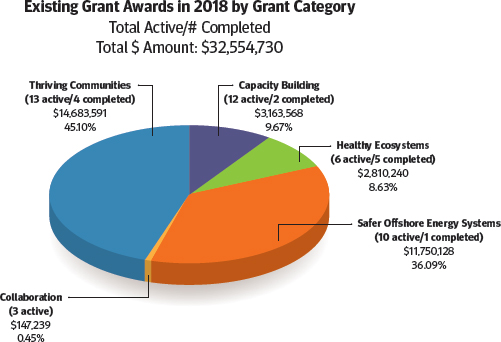2018 Investments
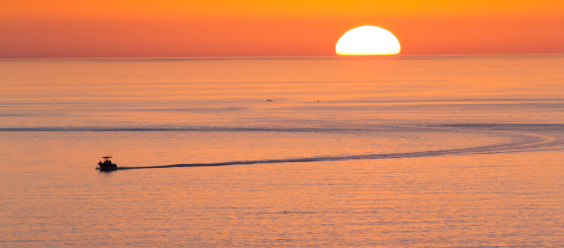
Grants
The GRP offers an evolving suite of grant opportunities corresponding to its initiatives. In 2018, we:
- Awarded 50 grants totaling $19,890,669 resulting from 6 competitions:
- Healthy Ecosystems Grants 3
- Thriving Communities Grants 4
- Capacity Building Grants 2
- Understanding Gulf Ocean Systems Grants 1
- Collaboration Grants 2
- Scientific Research Disaster Recovery Grants 1
- Opened 4 new grant opportunities:
- Scientific Research Disaster Recovery Grants 1 (awarded 2018)
- Understanding Gulf Ocean Systems Grants 1 (awarded 2018)
- Thriving Communities Grants 5 (to be awarded in 2019)
- Safer Offshore Energy Systems Grants 4 (to be awarded in 2019)
- Oversaw 41 existing grant awards in progress from previous years, 12 of which reached completion in 2018.
2018 Grant Awards
There were 50 new grant awards totaling $19,890,669 in 2018.
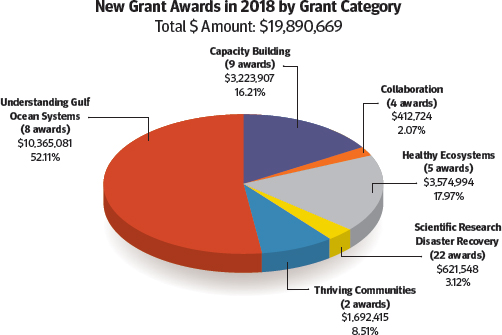
2018 Grant Awards
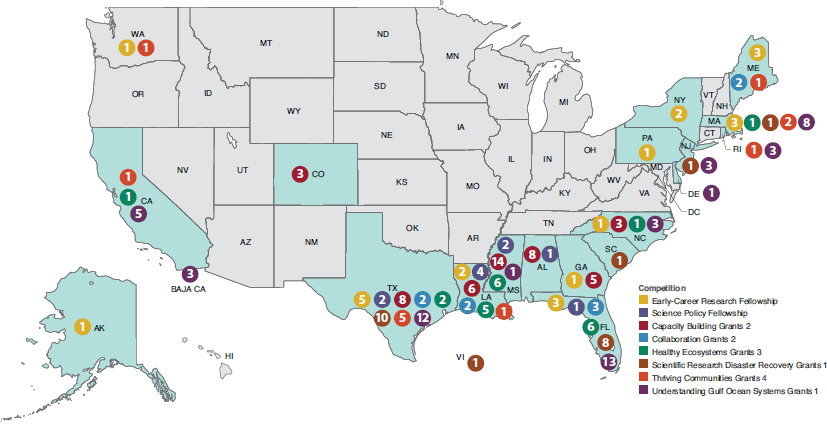
*Grant recipients for a single award include all individuals on the official project team, who may be located at multiple institutions in multiple states. Distribution on the map reflects this.
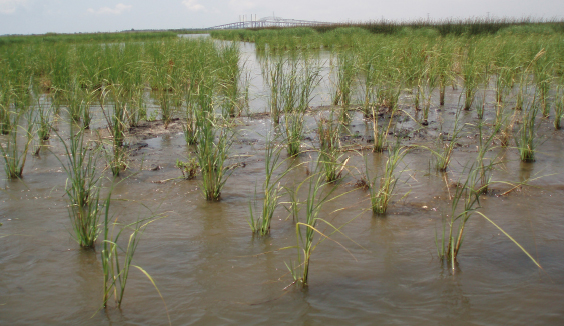
Healthy Ecosystems Grants 3
Topic: Integration of Monitoring and Evaluation into Environmental Restoration Projects to Improve Outcomes in the Gulf of Mexico
Total Awards: 5 projects totaling $3,574,994
DEVELOPING AN INTEGRATED MONITORING AND ASSESSMENT FRAMEWORK FOR EVALUATING ECOSYSTEM SERVICE OUTCOMES FROM SEAGRASS RESTORATION IN THE GULF OF MEXICO
Award Amount: $365,699
Project Director: Sarah Lester (Florida State University)
Project Team Affiliation: Florida State University
Overview: Long-term degradation of seagrass habitat by human impacts and a growing understanding of the ecosystem services benefits that healthy seagrass beds provide have made seagrass restoration a major priority for the Gulf of Mexico. However, ecosystem services benefits are rarely tracked
by restoration monitoring efforts due to a lack of standardized approaches for measuring them. This project intends to address this gap by using existing datasets on seagrass along the Florida Gulf Coast to develop models and metrics that can be used to link and quantify the relationship between seagrass restoration and ecosystem services. The project outputs will assist practitioners with seagrass management and restoration planning and prioritization both in the Gulf of Mexico and beyond.
THE EFFICACY OF MARSH TERRACES IN ENHANCING AND RESTORING GULF COASTAL WETLANDS
Award Amount: $852,387
Project Director: Brian Davis (Mississippi State University)
Project Team Affiliations: Mississippi State University in cooperation with Ducks Unlimited and Louisiana Department of Wildlife and Fisheries
Overview: Some of the greatest rates of coastal wetland loss in North America occur along the U.S. coast of the Gulf of Mexico. One coastal restoration technique commonly used to mitigate wetland loss in Louisiana and Texas is marsh terracing, whereby ridges of sediment are constructed and planted with vegetation to help protect surrounding areas against erosion from wind and waves. Despite widespread use, past monitoring and research efforts have yielded only limited understanding about the efficacy and persistence of marsh terraces. Through close collaboration with practitioners, this project aims to address this gap and will examine past marsh terracing projects to evaluate their effectiveness as a coastal restoration technique and provide guidance on their use in future restoration efforts.
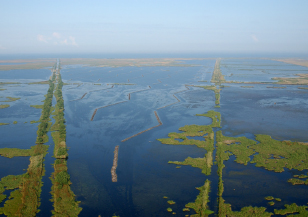
STANDARD LOGICAL MODELS AND METRICS FOR GULF RESTORATION: LINKING PROJECT OUTCOMES TO ECONOMIC, HEALTH, AND WELL-BEING BENEFITS FOR PEOPLE
Award Amount: $1,335,798
Project Director: Lydia Olander (Duke University)
Project Team Affiliations: Duke University in cooperation with Texas A&M University–Corpus Christi and The Nature Conservancy
Overview: Billions of dollars will be devoted to the restoration of Gulf ecosystems over the coming decades. However, a common framework does not currently exist for assessing and reporting on restoration progress and effectiveness across different projects and locations in order to coordinate progress toward shared, overarching environmental, social, and economic goals. This project is focused on advancing standardized measures of restoration work through a collaborative approach with practitioners, community members, technical experts, and decision makers to develop ecosystem service logic models. These models can then be used to produce a transferable and scalable approach for measuring success and comparing outcomes across different Gulf restoration projects.
TRANSPORT THRESHOLDS FOR FINE SEDIMENT IN VEGETATION
Award Amount: $592,180
Project Director: Christopher Esposito (The Water Institute of the Gulf)
Project Team Affiliations: The Water Institute of the Gulf in cooperation with Massachusetts Institute of Technology and Tulane University
Overview: Sea-level rise poses a serious challenge to natural resource managers as they work to retain and restore coastal marshes. Sediment transported to a marsh by a river or tides can play an important role in mitigating the effects of sea-level rise by increasing land surface elevation. At present there are no standardized data collection techniques that can be used to monitor sediment transport into and within vegetated regions, limiting the ability to measure and predict the influence of restoration efforts. This project, developed in close collaboration with coastal restoration practitioners, aims to establish a standardized data collection methodology for monitoring sediment transport within coastal wetland vegetation. Restoration practitioners will be able to use this methodology to improve predictions of marsh sustainability and better assess the effectiveness of restoration efforts.
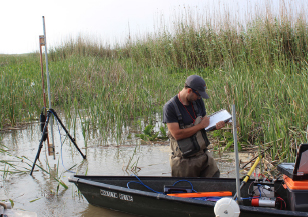
USING PAST SEAGRASS RESTORATION PROJECTS TO INFORM RESEARCH AND IMPROVE THE MONITORING OF FUTURE RESTORATION EFFORTS
Award Amount: $428,930
Project Director: Susan Bell (University of South Florida)
Project Team Affiliations: University of South Florida in cooperation with Florida Fish and Wildlife Research Institute
Overview: Seagrass restoration is becoming an increasingly common management component for enhancing ecosystem health within the Gulf of Mexico. However, the various efforts undertaken by different entities have not yet been adequately assessed to learn about their success over time and inform future restoration efforts. This project aims to synthesize unpublished data from past seagrass restoration projects at more than 250 sites along the Florida coast into a single database, conduct on-site visits of selected projects, and convene a workshop involving researchers and restoration practitioners in order to determine best practices for seagrass restoration design and monitoring. The products will be used to improve both the implementation and the assessment of future seagrass restoration efforts.
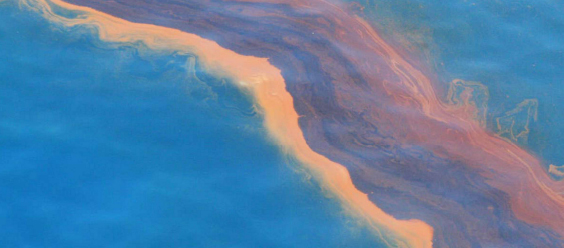
Thriving Communities Grants 4
Topic: Improving Risk-Based Evaluations to Support a Public Health Response to the Next Oil Spill
Total Awards: 2 projects totaling $1,692,415
ASSESSING TOXICITY OF OIL WEATHERED ON THE SEA SURFACE: THE IMPORTANCE OF OIL PHOTO-PRODUCTS
Award Amount: $992,415
Project Director: Christoph Aeppli (Bigelow Laboratory for Ocean Sciences)
Project Team Affiliations: Bigelow Laboratory for Ocean Sciences in cooperation with Applied Science Associates, Inc.; Louisiana State University; University of California, Davis; and Woods Hole Oceanographic Institution
Overview: Oil floating at the ocean surface during an oil spill interacts with sunlight and forms “photo-products.” These photo-products are persistent and potentially toxic, but knowledge about their biological impacts, including ecosystem and human health risks, is limited. Thus, they are not adequately accounted for by decision makers when evaluating oil spill risks and impacts. This project, which includes practitioner engagement and input throughout, aims to address this knowledge gap and improve oil spill risk assessment by investigating the chemical composition, bioavailability, toxicity, and long-term health effects of oil photo-products and incorporating this information into models used for oil spill risk assessment.
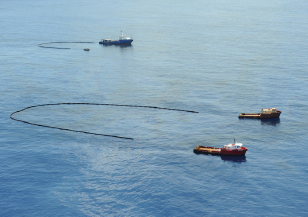
PRIORITIZING RISKS FROM OIL SPILLS: SUPPORTING DECISIONS WITH READ-ACROSS USING 21ST CENTURY EXPOSURE AND TOXICOLOGICAL SCIENCES
Award Amount: $700,000
Project Director: Weihsueh Chiu (Texas A&M University)
Project Team Affiliations: Texas A&M University in cooperation with Center for Toxicology and Environmental Health and Pacific Northwest National Laboratory
Overview: Current evaluations of public health impacts of oil spills are largely based on only what is known about a few specific chemicals in oil. However, an oil spill can involve a complex mix of interacting substances and environmental
factors and this produces many unknowns that are either difficult or not currently possible to account for. Alternative approaches are needed to address existing limitations and improve assessment and decision-making processes relating to public health risks resulting from oil spills. This project, which includes interactions with a diverse range of practitioners, aims to address this need using new approaches and technologies in exposure science and toxicology that try to predict the toxicity of substances for which there is limited information using information from analogous or similar substances.
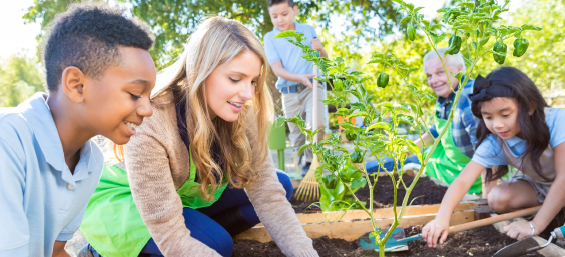
Capacity Building Grants 2
Topic: Advancing Scientific and Environmental Literacy in Children and Youth
Total Awards: 9 projects totaling $3,223,907
BUILDING SEA-LEVEL RISE AND FLOOD RESILIENCE CAPACITY IN THE NORTHERN GULF THROUGH STUDENTS AND TEACHERS
Award Amount: $391,536
Project Director: Renee Collini (Mississippi State University)
Project Team Affiliations: Mississippi State University in cooperation with Alabama School of Mathematics and Science, Dauphin Island Sea Lab, Mississippi-Alabama Sea Grant Consortium, Northern Gulf of Mexico Sentinel Site Cooperative, Smart Home America, and University of South Alabama
Overview: Coastal flooding and sea-level rise coupled with above-average regional socioeconomic vulnerability and rapid development are exacerbating hazard impacts in the northern Gulf of Mexico. In order to actively develop and execute resilience actions, it is imperative for future natural resource managers, elected officials, and voters to understand the potential risks to their communities. This project aims to help create an informed and prepared coastal citizenry possessing the understanding and skills necessary to reduce coastal vulnerability to flooding and sea-level rise. Collaborating with area educators in coastal Alabama and Mississippi, the project will develop and refine an engaging, hands-on curriculum for 9th–12th grade students pertaining to flooding and sea-level rise resilience and conduct outreach to support its use in classrooms and nontraditional educational settings throughout the region.
CONCEPTUALIZING HUMAN ALTERATION AND NATURAL GROWTH IN ESTUARIES AND SAVANNAS (CHΔNGES)
Award Amount: $100,000
Project Director: Ayesha Gray (Grand Bay National Estuarine Research Reserve)
Project Team Affiliation: Grand Bay National Estuarine Research Reserve
Overview: The Grand Bay National Estuarine Research Reserve in Mississippi is home to several unique ecosystems that experience ongoing challenges from natural and human-caused disruptions. Maintaining and restoring the health of these ecosystems requires the constant application of management, monitoring, and restoration efforts. This project plans to use these unique habitats and the current management, monitoring, and restoration practices employed on them as a platform to educate students about ecological processes and ecosystem function. To advance their scientific and environmental literacy, local 9th–12th grade students from the surrounding area will be provided with a series of immersive educational experiences in the estuary and pine savanna involving critical thinking exercises and hands-on engagement with the work being done by natural resources managers at the reserve.
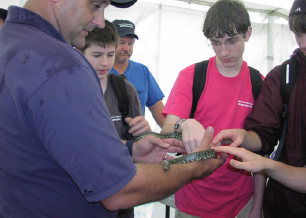
ENVIRONMENTAL HEALTH YOUTH COUNCIL PROMOTING SCIENCE-BASED LEARNING AND LEADERSHIP FOR UNDERSERVED HOUSTON AREA YOUTH
Award Amount: $443,906
Project Director: Elena Craft (Environmental Defense Fund)
Project Team Affiliations: Environmental Defense Fund in cooperation with City of Houston Health Department, Galena Park High School, John P. McGovern Museum of Health & Medical Science, Pasadena Memorial High School, and Raul Yzaguirre School for Success Charter School
Overview: As a result of extensive industrial activity, the Houston, Texas, area suffers from chronic air quality issues and associated health impacts. As global warming continues, more frequent and extreme rainfall events are expected to result in massive flooding and increased pollution, such as that resulting from Hurricane Harvey. The Houston area communities most at risk from air pollution and climate change impacts are predominantly low-income, underserved communities along the Houston Ship Channel. This project aims to prepare 9th–12th grade youth in these communities to become future leaders on climate and air pollution issues and more knowledgeable about how to help improve
the health and prosperity of their communities. High school students will be organized into year-long Environmental Health Youth Councils and provided with leadership training and science-based educational experiences pertaining to resiliency planning and improving environmental conditions. In addition, a complementary museum exhibit will be developed to reach broader audiences.
MAGNOLIA BAYOU: A CATALYST FOR CHANGE IN DOWNTOWN BAY ST. LOUIS, MISSISSIPPI
Award Amount: $98,080
Project Director: David Perkes (Mississippi State University Gulf Coast Community Design Studio)
Project Team Affiliations: Mississippi State University Gulf Coast Community Design Studio in cooperation with Bay St. Louis Creative Arts Center and unabridged Architecture
Overview: Magnolia Bayou, an important coastal stream flowing into the Bay of St. Louis, is designated as a highly impaired waterway in Mississippi. The Magnolia Bayou Watershed is an area that includes much of downtown Bay St. Louis, a growing community experiencing an influx of new development that is placing increased pressure on Magnolia Bayou. A conservation plan for the Magnolia Bayou Watershed identified community outreach and engagement as the most important strategy for dealing with these increasing pressures and protecting the watershed. This project aims to engage 9th–12th grade students in exploring policies and actions the community can use to address threats to the Magnolia Bayou Watershed while also learning about professions related to environmental stewardship and mechanisms that can be used to influence change. Through the project, students will participate in a series of workshops and field experiences to learn about water quality issues impacting the watershed and interact with decision makers and conservation professionals working to protect the watershed.
OKEFENOKEE: UNDERSTANDING REAL-WORLD RELEVANCE THROUGH SUWANNEE WATERSHED ASSESSMENT AND MONITORING PROJECT (OUR2 SWAMP)
Award Amount: $763,897
Project Director: Lacey Huffling (Georgia Southern University)
Project Team Affiliation: Georgia Southern University
Overview: While local watersheds and the larger water bodies they ultimately flow into can seem geographically distant and disconnected from one another, activities occurring in the local watersheds and the overall ecosystem health of these watersheds have significant downstream impacts on the ecological health of the larger water bodies. This is particularly true of the Gulf of Mexico, which receives water from rivers draining from 31 states. This project aims to increase 6th–12th grade students’ understanding of these causal relationships and is focused around the Okefenokee Swamp in southeastern Georgia and its impact on the Gulf of Mexico. The project will train and provide ongoing support for teachers to integrate local ecosystem monitoring—through Adopt-A-Stream and other citizen science projects—with problem-based learning and fieldwork to provide first-hand demonstrations for students of the connection between their
local watershed and the Gulf of Mexico. Community demographics in the region will also result in increased participation of underrepresented and underserved populations in citizen science.
PROJECT RESILIENCE: EMPOWERING GULF COAST YOUTH TO THRIVE IN TRANSFORMATIVE COMMUNITIES
Award Amount: $293,506
Project Director: Becca Hatheway (University Corporation for Atmospheric Research [UCAR])
Project Team Affiliations: UCAR in cooperation with South Louisiana Wetlands Discovery Center and Trainer Evaluation
Overview: Coastal communities in Louisiana, as elsewhere along the Gulf Coast, are being impacted by rising sea levels, changes in storm intensity, and coastal erosion. These impacts are expected to grow over time as global warming increases and land subsidence continues. Most students in the region understand they are living in one of the fastest changing areas on the planet but knowledge about why the changes are occurring and what can be done in response is less widespread. This project aims to educate 9th–12th grade coastal Louisiana students on the science behind the challenges coastal communities are facing and empower them to use that science to develop community resilience plans addressing the challenges. The project team will develop an environmental science curriculum focused on the Gulf Coast and a toolkit that students can use to guide them through a resilience planning process. A select number of the resilience plans developed will be chosen to receive support for implementation and the educational resources developed will be made available to educators throughout the Gulf Coast region.
SEEDING WETLAND RESTORATION AND CONSERVATION IN MISSISSIPPI HIGH SCHOOLS
Award Amount: $399,930
Project Director: Eric Sparks (Mississippi State University; Mississippi-Alabama Sea Grant Consortium)
Project Team Affiliations: Mississippi State University in cooperation with Dauphin Island Sea Lab and University of Southern Mississippi
Overview: While coastal degradation and poor water quality are chronic issues affecting the lives of those living across coastal Mississippi, many students in the region often have a perceived disconnect between themselves and the environment. Some potential reasons for this disconnect include limited exposure to natural landscapes, despite living in nearby proximity to them, and an inadequate understanding of people’s reliance on natural systems. This project aims to help address this disconnect by providing 10th–12th grade students with hands-on educational experiences that promote the stewardship of natural ecosystems and develop understanding of how the health of natural environments contributes to coastal resilience. The project will develop and implement a paired wetland nursery and education program for high schools in coastal Mississippi that will involve students learning about coastal wetlands, growing wetland plants in nurseries, planting their nursery-grown plants on coastal restoration projects, and conducting related student-designed research projects.
WEATHERBLUR: ENGAGING STUDENTS IN MISSISSIPPI, ALABAMA, AND MAINE THROUGH CITIZEN SCIENCE AND INQUIRY-DRIVEN, PROJECT-BASED LEARNING
Award Amount: $438,140
Project Director: Christine Bevc (RTI International)
Project Team Affiliations: RTI International in cooperation with Maine Mathematics and Science Alliance
Overview: Coastal communities around the country face environmental challenges stemming from natural and human-caused disasters that affect community health. Developing an understanding about natural systems and the interdependence of people and the natural environment is critical to helping prepare students to address these challenges in the future. This project aims to build scientific and environmental literacy among underserved 4th–6th grade students in coastal Alabama, Maine, and Mississippi through co-created citizen science and action projects pertaining to environmental health. The effort will be based around an existing online platform, WeatherBlur, which connects students and classroom educators with science experts to collaborate on developing project research questions, collecting field data, sharing results, and discussing actions students can take in their local communities to address the challenges on which their projects focused.
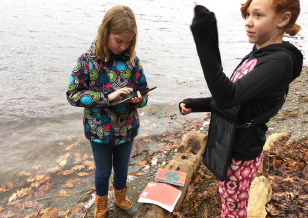
YOUTH-LED, COMMUNITY-BASED CITIZEN SCIENCE PROJECTS IN THE GULF REGION
Award Amount: $294,912
Project Director: Ellen (Stevie) Lewis (Public Laboratory for Open Technology and Science [Public Lab])
Project Team Affiliation: Public Lab
Overview: U.S. Gulf Coast communities face a convergence of environmental concerns with distinct social, cultural, economic, political, and regulatory factors that create complex situations that many of these communities find themselves challenged to address. For this reason, the Gulf region is both a fitting and important place to foster youth to become civic-minded, scientifically literate members of society engaged in building more resilient communities. This project aims to build the capacity of Gulf region youth to address environmental issues affecting their communities by engaging them in hands-on science learning and practice relevant to their lived experience. The project will pilot a community citizen science learning model that positions young people as knowledge producers rather than knowledge consumers. With teacher support, students between 12 and 18 years old will lead research projects on local environmental topics that they have identified as important. Materials developed and refined through the pilot effort will be made available for use by other educators throughout the region.
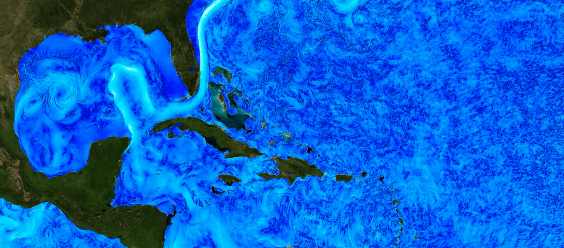
Understanding Gulf Ocean Systems Grants 1
Topic: Studies and Observations to Inform the Loop Current Campaign
Total Awards: 8 projects totaling $10,365,081
DRY TORTUGAS AND LOWER KEYS HIGH FREQUENCY RADARS
Award Amount: $1,371,027
Project Director: Clifford Merz (University of South Florida)
Project Team Affiliations: University of South Florida in cooperation with Rutgers University and University of Miami
Overview: This project will procure, install, and operate high frequency radar systems to measure surface currents at three locations in the Straits of Florida region of the Gulf of Mexico: Fort Jefferson/Dry Tortugas National Park, Key West, and Marathon. The systems will provide new, real-time data for model assimilation and validation to better understand the evolution of the LCS.
GULF OF MEXICO LOOP CURRENT AND EDDY OBSERVATIONS FROM HIGH FREQUENCY RADAR SYSTEMS
Award Amount: $1,229,424
Project Director: Stephan Howden (University of Southern Mississippi)
Project Team Affiliations: University of Southern Mississippi in cooperation with CODAR Ocean Sensors, Rutgers University, and Shell
Overview: This project will procure, install, and operate high frequency radar systems to measure surface currents from two offshore platforms at locations in the northeastern-most areas of oil and gas operations in the Gulf of Mexico. The systems will provide new, real-time data for model assimilation and validation to better understand the evolution of the LCS.
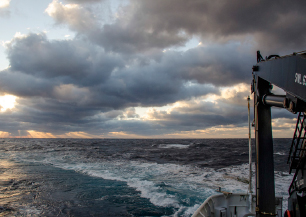
INFORMING THE LOOP CURRENT CAMPAIGN: DATA COMPILATION TO IMPROVE UNDERSTANDING, SIMULATION, AND PREDICTION OF THE LOOP CURRENT SYSTEM
Award Amount: $647,813
Project Director: Barbara Kirkpatrick (Gulf of Mexico Coastal Ocean Observing System Regional Association)
Project Team Affiliations: Gulf of Mexico Coastal Ocean Observing System Regional Association in cooperation with Fugro, Harte Research Institute for Gulf of Mexico Studies, Ocean Sierra, RPS Ocean Science, Texas A&M University–College Station, Texas A&M University–Corpus Christi, and Woods Hole Group
Overview: This project will design, develop, deploy, and maintain an information system to digitally compile, update, analyze, and make publicly accessible physical oceanographic and hydrographic data from Gulf of Mexico Loop Current field studies. The system will be an important component of future data compilation efforts for a long-term LCS research campaign.
LOOP CURRENT FLOATS: NEAR-REAL-TIME HYDROGRAPHY AND DEEP VELOCITY IN THE LOOP CURRENT SYSTEM USING AUTONOMOUS PROFILERS
Award Amount: $1,155,371
Project Director: Amy Bower (Woods Hole Oceanographic Institution)
Project Team Affiliations: Woods Hole Oceanographic Institution in cooperation with Centro de Investigación Científica y de Educación Superior de Ensenada (Center for Scientific Research and Higher Education at Ensenada)
Overview: This project will procure, deploy, and maintain a fleet of autonomous ocean dynamics-instrumented profiling floats to measure temperature, salinity, and current velocities in LCS active areas of the eastern Gulf of Mexico.
NUMERICAL MODELING
Award Amount: $2,100,946
Project Director: Ruoying He (North Carolina State University)
Project Team Affiliations: North Carolina State University in cooperation with Centro de Investigación Científica y de Educación Superior de Ensenada (Center for Scientific Research and Higher Education at Ensenada); Chevron; Florida State University; Massachusetts Institute of Technology; Scripps Institution of Oceanography; and University of California, Santa Cruz
Overview: This project will perform assessments of existing Gulf of Mexico forecasting systems to test the performance and sensitivity of current models in resolving both surface and subsurface circulation and to evaluate long-range prediction capabilities.
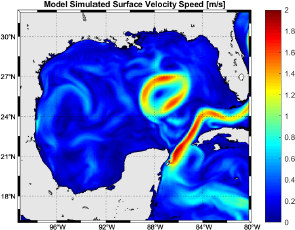
PASSIVE GULF OF MEXICO LOOP CURRENT OBSERVATIONS FROM HF RADAR ACROSS THE YUCATAN STRAIT
Award Amount: $844,263
Project Director: Anthony Knap (Texas A&M University–College Station)
Project Team Affiliations: Texas A&M University–College Station in cooperation with CODAR Ocean Sensors and Rutgers University
Overview: This project will procure, install, and operate high frequency radar systems to measure surface currents at two locations in the Yucatan Channel region of the Gulf of Mexico: Isla Contoy and Puerto Morelos. The systems will provide new, real-time data for model assimilation and validation to better understand the evolution of the LCS.
PRESSURE AND CURRENT METERS
Award Amount: $2,078,240
Project Director: Kathleen Donohue (The University of Rhode Island)
Project Team Affiliation: The University of Rhode Island
Overview: This project will procure and deploy a coherent field array of sensors in deep waters of the central Gulf region to measure currents and pressures in the full water column from areas near the ocean floor to the surface. Data collected about full water column circulation will increase understanding of LCS behavior and inform LCS forecasting efforts.
TAKING THE PULSE OF THE WEST FLORIDA SHELF AT A HYPOTHESIZED LOOP CURRENT CONTROL POINT
Award Amount: $937,997
Project Director: Robert Weisberg (University of South Florida)
Project Team Affiliations: University of South Florida in cooperation with University of Delaware
Overview: This project will procure, deploy, and operate a single-point, real-time ocean dynamics mooring northwest of the Dry Tortugas to measure temperature, salinity, and currents at different depths.
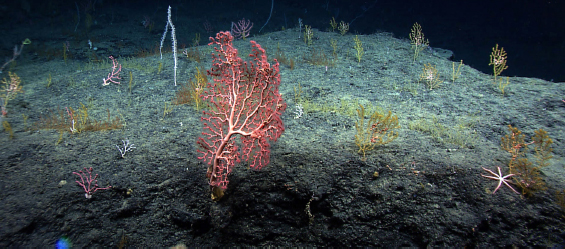
Collaboration Grants 2
Topic: Seed Grants for Gulf Research Program Early-Career Research Fellows to Collaborate on Projects That Take Their Research in Previously Unexplored Directions
Total Awards: 4 projects totaling $412,724
ASSESSMENT OF COUPLED HUMAN-INFRASTRUCTURE SYSTEMS ADAPTATION TO EVOLVING FLOODING AND STORM SURGE HAZARDS UNDER SEA-LEVEL RISE
Award Amount: $80,000
Co-Project Directors: Ali Mostafavi (2017 Early-Career Research Fellow; Texas A&M University) and Ashley Ross (2017 Early-Career Research Fellow; Texas A&M University–Galveston)
Project Team Affiliations: Texas A&M University and Texas A&M University–Galveston
Overview: Climate change is altering the hazard profiles that face coastal communities. Hurricanes are becoming more intense and frequent, sea-level rise is encroaching on the built environment, and flooding associated with changing precipitation patterns is becoming more acute. Meanwhile, these changes are unfolding amid aging urban infrastructure serving growing populations that drive continued development and sprawl. Within discussions of community resilience and coastal adaptation, not enough attention has been paid to societal expectations for infrastructure resilience and the implications of these expectations for infrastructure decision making relating to adaptation. This project is examining where, how, and to what extent public perceptions of changing hazard profiles and expectations for infrastructure systems interact with adaptation planning and infrastructure prioritization in coastal communities. The aim is to provide guidance for infrastructure decision makers on how to better account for societal expectations and objectives in their decision processes.
DO THE MICROBIOMES OF BENTHIC FORAMINIFERA FACILITATE HEAVY METAL RESISTANCE?
Award Amount: $108,189
Co-Project Directors: Michael Martínez-Colón (2017 Early-Career Research Fellow; Florida A&M University) and Cameron Thrash (2017 Early-Career Research Fellow; University of Southern California)
Project Team Affiliations: Florida A&M University and University of Southern California
Overview: Microorganisms play an important role in many environmental processes, including bioremediation of contaminants. The rapid response of certain microorganisms, specifically benthic foraminifera (shelled protists), to develop a resistance to heavy metal pollution has led to their widespread use as bioindicators of ecosystem health in coastal and estuarine ecosystems. However, little is known about the underlying mechanisms responsible for their heavy metal resistance and the roles these mechanisms might play in decontamination processes. It is thought that associated microbial communities may be an important part of these mechanisms. This project is examining the microbiomes associated with heavy metal resistant benthic foraminifera to identify specific microbial community members that mediate heavy metal resistance and thereby detoxify their sediments. Findings will assist in estuarine environmental management.
IS GULF OF MEXICO MARINE BENTHIC ECOSYSTEM RESILIENCE GEOCHEMICALLY COUPLED TO RIVERINE-DERIVED MINERAL DELIVERY?
Award Amount: $125,379
Co-Project Directors: Jordon Beckler (2016 Early-Career Research Fellow; Florida Atlantic University Harbor Branch Oceanographic Institute), Michael Martínez-Colón (2017 Early-Career Research Fellow; Florida A&M University), and Christoph Aeppli (2017 Early-Career Research Fellow; Bigelow Laboratory for Ocean Sciences)
Project Team Affiliations: Bigelow Laboratory for Ocean Sciences, Florida A&M University, and Florida Atlantic University Harbor Branch Oceanographic Institute
Overview: Many shallow and deepwater hydrocarbon exploration sites are geographically located in areas of the ocean significantly influenced by riverine inflows, which deposit terrestrially derived organic matter and minerals. Terrestrially influenced sediments can provide geochemical protection against hydrocarbon and heavy metal contaminants by potentially accelerating their degradation. The geochemical and ecological processes occurring in the benthic zone—the area that includes the sediment surface and some subsurface layers—can play a relatively large role in controlling the chemistry of the water column above this zone, thereby having implications for what happens during an oil spill. This project is examining how terrestrially derived deposits from river inflows affect contaminant degradation and influence the resilience of benthic ecosystems, with an emphasis on mitigating future hydrocarbon spills. Findings could inform river discharge management, offshore well placement, and expected benthic degradation processes and rates in the event of a future spill.
MITIGATION OF TOXIC OIL WEATHERING PRODUCTS BY MICROBES
Award Amount: $99,156
Co-Project Directors: Christoph Aeppli (2017 Early-Career Research Fellow; Bigelow Laboratory for Ocean Sciences) and Cameron Thrash (2017 Early-Career Research Fellow; Louisiana State University)
Project Team Affiliations: Bigelow Laboratory for Ocean Sciences and Louisiana State University
Overview: After a marine oil spill, a variety of byproducts are formed as the oil interacts with the surrounding environment. Oxygenated hydrocarbons are one such byproduct that is produced when oil on the surface of the water interacts with sunlight. While oxygenated hydrocarbons are potentially toxic to aquatic organisms, there is only a limited understanding about their environmental fate. It is known that marine bacteria play an important role in the degradation of other oil byproducts, such as polycyclic aromatic hydrocarbons and hydrocarbons in general; it is not known what role marine bacteria play in the degradation of oxygenated hydrocarbons. This project aims to address this knowledge gap for oxygenated hydrocarbons. The goal is to increase the understanding of the processes that affect hydrocarbon cycling and degradation in marine environments and to improve the capabilities to predict the ecosystem and human health risks of oil residues after oil spills.
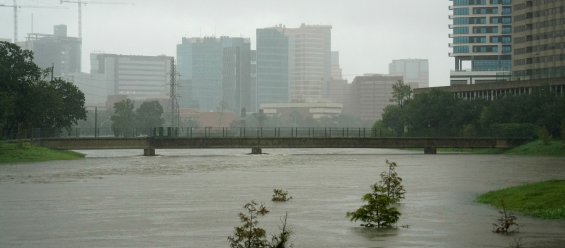
Scientific Research Disaster Recovery Grants 1
Topic: Small Grants to Help with Repair, Replacement, or Recovery of Equipment, Data, or Other Research Materials Damaged or Lost as a Result of Hurricanes Harvey and Irma and Their Aftermaths
Total Awards: 22 projects totaling $621,548
AARON ADAMS
Award Amount: $29,800
Affiliation: Bonefish & Tarpon Trust
Purpose: To replace monitoring equipment used to inform fisheries and habitat management that was lost during Hurricane Irma.
BRUCE BARBER
Award Amount: $33,106
Affiliation: Gulf Shellfish Institute
Purpose: To support the recovery of a research project impacted by Hurricane Irma that is examining the relationships among filter-feeding bivalves, water quality, and seagrass distribution.
BERNARD CASTILLO II
Award Amount: $38,053
Affiliation: University of the Virgin Islands
Purpose: To support the recovery of a research project focused on lionfish, an invasive species in the U.S. Virgin Islands, that was impacted by Hurricane Irma.
JUDSON CURTIS
Award Amount: $49,657
Affiliation: Texas A&M University–Corpus Christi
Purpose: To recover and replace equipment and data used in fisheries research that was displaced or lost because of Hurricane Harvey.
ANNA ARMITAGE
Award Amount: $10,000
Affiliation: Texas A&M University–Galveston
Purpose: To assist with the removal of Hurricane Harvey debris from a coastal wetland research site.
KIM BASSOS-HULL
Award Amount: $8,863
Affiliation: Mote Marine Laboratory & Aquarium
Purpose: To replace equipment lost during Hurricane Irma that is used to support the long-term monitoring of animal movements in Sarasota Bay and adjacent Gulf of Mexico waters.
KATY CUMMINGS
Award Amount: $9,716
Affiliation: Florida Fish and Wildlife Conservation Commission
Purpose: To replace equipment lost during Hurricane Irma that supports the long-term monitoring of coral reefs off the coast of southern Florida.
DEANA ERDNER
Award Amount: $45,000
Affiliation: The University of Texas at Austin
Purpose: To replace toxic algae research specimens lost as a result of Hurricane Harvey.
COLETTE FEEHAN
Award Amount: $18,362
Affiliation: Montclair State University
Purpose: To replace equipment and establish new study sites for coral reef research disrupted by Hurricane Irma.
DEAN GRUBBS
Award Amount: $11,060
Affiliation: Florida State University
Purpose: To replace and deploy equipment lost during Hurricane Irma that supports the long-term monitoring of animal movements in the Apalachicola Bay in the northeastern Gulf of Mexico.
ADELJEAN HO
Award Amount: $46,500
Affiliation: Bethune-Cookman University
Purpose: To support the recovery of a demonstration project damaged by Hurricane Irma that is evaluating and promoting the effectiveness of using living shorelines to reduce nonpoint source pollution.
STEPHEN KAJIURA
Award Amount: $6,175
Affiliation: Florida Atlantic University
Purpose: To replace equipment used to support the long-term monitoring of animal movements along southeastern Florida that was lost during Hurricane Irma.
ARAN MOONEY
Award Amount: $46,500
Affiliation: Woods Hole Oceanographic Institution
Purpose: To replace equipment used in coral reef research that was lost during Hurricane Irma.
BRICE ORANGE
Award Amount: $42,700
Affiliation: OrangeWave Innovative Science, LLC
Purpose: To replace equipment and restore a network of environmental monitoring stations in the U.S. Virgin Islands that were destroyed by Hurricane Irma.
MICHAEL STAREK
Award Amount: $41,084
Affiliation: Texas A&M University–Corpus Christi
Purpose: To re-establish and install equipment for research sites used in Gulf of Mexico geospatial modeling research that were impacted by Hurricane Harvey.
LEE FUIMAN
Award Amount: $49,412
Affiliation: The University of Texas at Austin
Purpose: To replace equipment used in marine ecosystem research that was destroyed during Hurricane Harvey.
DARREN HENRICHS
Award Amount: $30,459
Affiliation: Texas A&M University
Purpose: To replace equipment and restore the operations of a system damaged by Hurricane Harvey that monitors for harmful algae blooms along the Texas coast.
XINPING HU
Award Amount: $9,814
Affiliation: Texas A&M University–Corpus Christi
Purpose: To repair and replace sensors used in ocean acidification research that were damaged by Hurricane Harvey.
LARRY LLOYD
Award Amount: $23,833
Affiliation: Texas A&M University–Corpus Christi
Purpose: To replace equipment and restore a water quality monitoring platform in San Antonio Bay that was damaged during Hurricane Harvey.
JENNY OAKLEY
Award Amount: $7,119
Affiliation: University of Houston–Clear Lake
Purpose: To assist with the replacement of a research vehicle used in river monitoring research that was destroyed during Hurricane Harvey.
BRANDI REESE
Award Amount: $17,170
Affiliation: Texas A&M University–Corpus Christi
Purpose: To replace sensors used in a Texas wetland study that were lost or damaged during Hurricane Harvey.
ROBERT WEISBERG
Award Amount: $47,165
Affiliation: University of South Florida
Purpose: To repair real-time meteorological and oceanographic monitoring research moorings that were damaged during Hurricane Irma.
2018 Grant Opportunities
Four grant opportunities were offered in 2018. Awards for 2018 opportunities not announced in 2018 will be announced in 2019.
Awarded in 2018
SCIENTIFIC RESEARCH DISASTER RECOVERY GRANTS 1
Topic: Assisting Scientific Research Efforts Impacted by Gulf Coast Hurricanes Harvey and Irma
Awards Made: $621,548
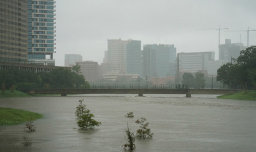
UNDERSTANDING GULF OCEAN SYSTEMS GRANTS 1
Topic: Studies and Observations to Inform the Loop Current Campaign
Awards Made: $10,365,081
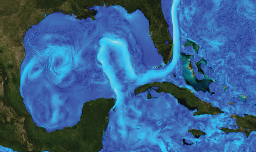
To Be Awarded in 2019
THRIVING COMMUNITIES GRANTS 5
Topic: Enhancing Coastal Community Resilience and Well-Being in the Gulf of Mexico Region
Awards Available: $10 million
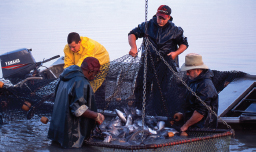
SAFER OFFSHORE ENERGY SYSTEMS GRANTS 4
Topic: Advancing Safety Culture in the Offshore Oil and Gas Industry
Awards Available: $10 million

Existing Grant Awards Active/Completed in 2018
There were 41 existing grant awards totaling $32,554,730 from previous years that were active in 2018, 12 of which reached completion. Visit nationalacademies.org/gulf for more information about active and completed grant awards from previous years.
